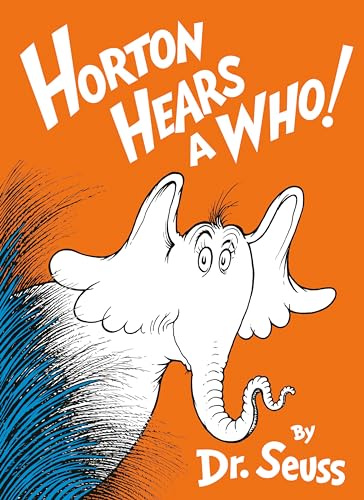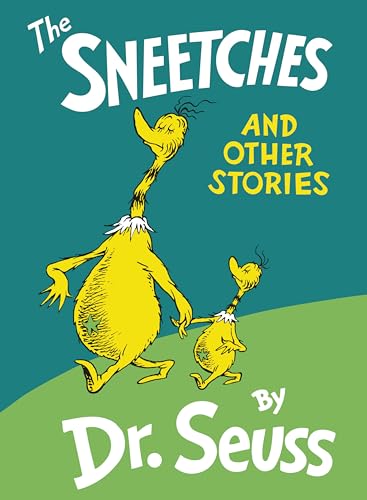Todd Walters is a graduate student at The Fletcher School, Tufts University. He also co-authors the politics and culture blog Neither Property Nor Style
Tonight, the roles of Socrates and Galileo will be played by Horton and the Mayor of Whoville, respectively.
 This past Friday night, I was dragged to see the new animated film Horton Hears a Who!, based on the well-known Dr. Seuss book published more than fifty years ago. Given my general antipathy to cartoons, I went in with low expectations. But despite my attitude and the lukewarm reviews that Horton has received, I realized that hiding just below the surface of this very simple tale about a well-meaning jungle elephant is a wonderful allegory about scientific and philosophical revolution, the dangers of autocracy, and the political implications of religious faith. Bear with me as I explain.
This past Friday night, I was dragged to see the new animated film Horton Hears a Who!, based on the well-known Dr. Seuss book published more than fifty years ago. Given my general antipathy to cartoons, I went in with low expectations. But despite my attitude and the lukewarm reviews that Horton has received, I realized that hiding just below the surface of this very simple tale about a well-meaning jungle elephant is a wonderful allegory about scientific and philosophical revolution, the dangers of autocracy, and the political implications of religious faith. Bear with me as I explain.
While the screenplay augments the details of the original text, the overall plot remains fairly straightforward. Horton is a whimsical elephant residing in the Jungle of Nool, who one day notices a tiny, circular “speck” of dust floating around in the air. Being an elephant and all, Horton’s extra-large ears provide him with a super sense of hearing. Thus, he is the only one in the jungle who hears the high-pitched yelps emanating from the speck, which he eventually realizes are the voices of the tiny people of the tiny town of Whoville located therein. Horton manages to make contact, by way of a tuba-horn-amplified drain pipe, with the bewildered Mayor of the town, who has already surmised that Whoville is not alone in the universe. The action heightens as Horton and the Mayor disclose their findings to everyone around them, and the crux of the story turns on the persecution of both noble protagonists by their respective societies for espousing these unacceptable beliefs.
The original book does not depict Whoville or its internal political and social dynamics in any detail, so this must have been the invention of the screenwriters Ken Daurio and Cinco Paul, and it provides an apropos parallel to the events unfolding in the Jungle. There, children of various exotic species are already following in Horton’s footsteps by looking for their own inhabited, floating specks of dust. But their fun is spoiled by an authoritarian Kangaroo who will have none of this nonsense. She haughtily dismisses the existence of anything that cannot be touched, seen, or heard, a notion that would certainly register with any moviegoers (whether old or young) who have ever pondered the existence of a higher power or reflected on the debate between materialism and spiritualism. The Kangaroo even goes so far as to hire a hit-man (well, a hit-eagle, actually) to confront Horton and destroy his precious speck along with whatever fanciful worlds live inside it. When the eagle fails in his mission, the Kangaroo then leads an angry mob to imprison Horton to put an end to all the tomfoolery.
It seems, then, that we have in Horton a hint of Socrates, a pariah who has broken free from the conventional thinking of his contemporaries by way of an exceptional skill to grasp a deeper reality that is, in fact, real, but that cannot be empirically demonstrated to the average citizen. He has become one of the fortunate few to break free of his chains and exit Plato’s cave, where the true nature of physical forms (in our case the speck of dust) can be understood for what they are, not merely for what they appear to be. Horton also stands accused, like Socrates before him, of corrupting society’s youth with his alternative vision of the natural world.
Similarly, the Mayor, as the only inhabitant of Whoville who senses any danger and, for most of the story, the only one who has actually spoken to Horton, encounters the same kind of resistance. When Horton warns of the potential doom that awaits Whoville, the Mayor takes the bold and courageous step of warning the other Whovillians about the threat. Like Horton, he is asking his society to accept what he knows on faith alone. But when the Mayor goes before the town’s oligarchic council of elders, we see that he has no real power, but is a merely a puppet of this exalted body. In fact, when the Mayor suggests canceling an upcoming celebration that will honor the town’s uninterrupted history of utopian hedonism, the elders bring down a giant glass barrier – what I can only describe as a “cone of silence” to any fans of the old “Get Smart” television show – in order to prevent the audience, i.e. the attending townspeople, from being exposed to so ludicrous an opinion. So it appears that the Mayor is the story’s Galileo in having proven, through scientific instrument, the relation of his own world to the larger universe above and beyond. In other words, he has realized that the sun does not revolve around Whoville (with due acknowledgment to Copernicus).
We see, then, in Whoville the dangers of autocratic rule, the secrecies it requires, its outright hostility to any sentiment that might disrupt the narrow party-line or the folkloric pillars on which it has been built. In short, the Council is putting Whoville at risk by not heeding the Mayor’s warning. Their commitment to maintaining the town’s utopian state of existence and their rejection of pluralism, though not conveyed by Dr. Seuss himself, nevertheless speak to the lessons that he may have been getting at in the post-World War II context in which he wrote – namely, the inevitable evils that lurk around the corner of any attempt to build a perfect society out of, in Kant’s words, the “crooked timber of humanity.”
The events in Whoville also speak to the more general matter of authority and rebellion. A.O. Scott touched on this point in an insightful essay on Seuss called “Sense and Nonsense” in the New York Times Magazine back in 2000. “Seuss’s moralism,” he said, “was a vision not just of how children should behave, but also how the grown-up world should be. World War II, part of which Seuss spent making propaganda films for the Army…honed his temperamental distrust of authority to a fine political edge.”
The flip side of the autocratic regime, of course, is the dehumanization of the individual, and nothing defines Horton Hears a Who! if not its famous admonishment, “A person’s a person, no matter how small.” Scott commented on this dynamic, too, when he noted that, in Seuss’s body of work, “An overt concern with social justice resounds through the anti-Fascist allegory of Yertle the Turtle, the satire of racism in The Sneetches and the humanism of Horton Hears a Who!” It is exactly that – humanism – that is the central lesson of the Horton story, and this lesson, we shouldn’t have to be reminded, is worth teaching over and over and over again to both children and adults alike. The message was relevant when the book first came out in 1954 in the aftermath of the Holocaust and the atomic bomb (according to some accounts, the real target the author had in mind), and it remains relevant today for myriad reasons that should be obvious to all.
As my brain generated this philosophical mumbo-jumbo while sitting in the movie theater, I had to constantly remind myself that, at the end of the day, for most viewers, Horton Hears a Who! will be nothing more than a colorful story about two imaginary worlds with a simple take-home lesson: Respect the rights of others regardless of their physical stature or societal position. So, despite the entertaining tale that it tells and the rich philosophical foundations on which it was built, I doubt that the film will garner a spot in the pantheon of great Western thinkers for either Dr. Seuss or the screenwriters of Horton. The latter, by the way, have also brought us the recently released movie College Road Trip, which I can only imagine must be an alternative take on Homer’s Odyssey.



